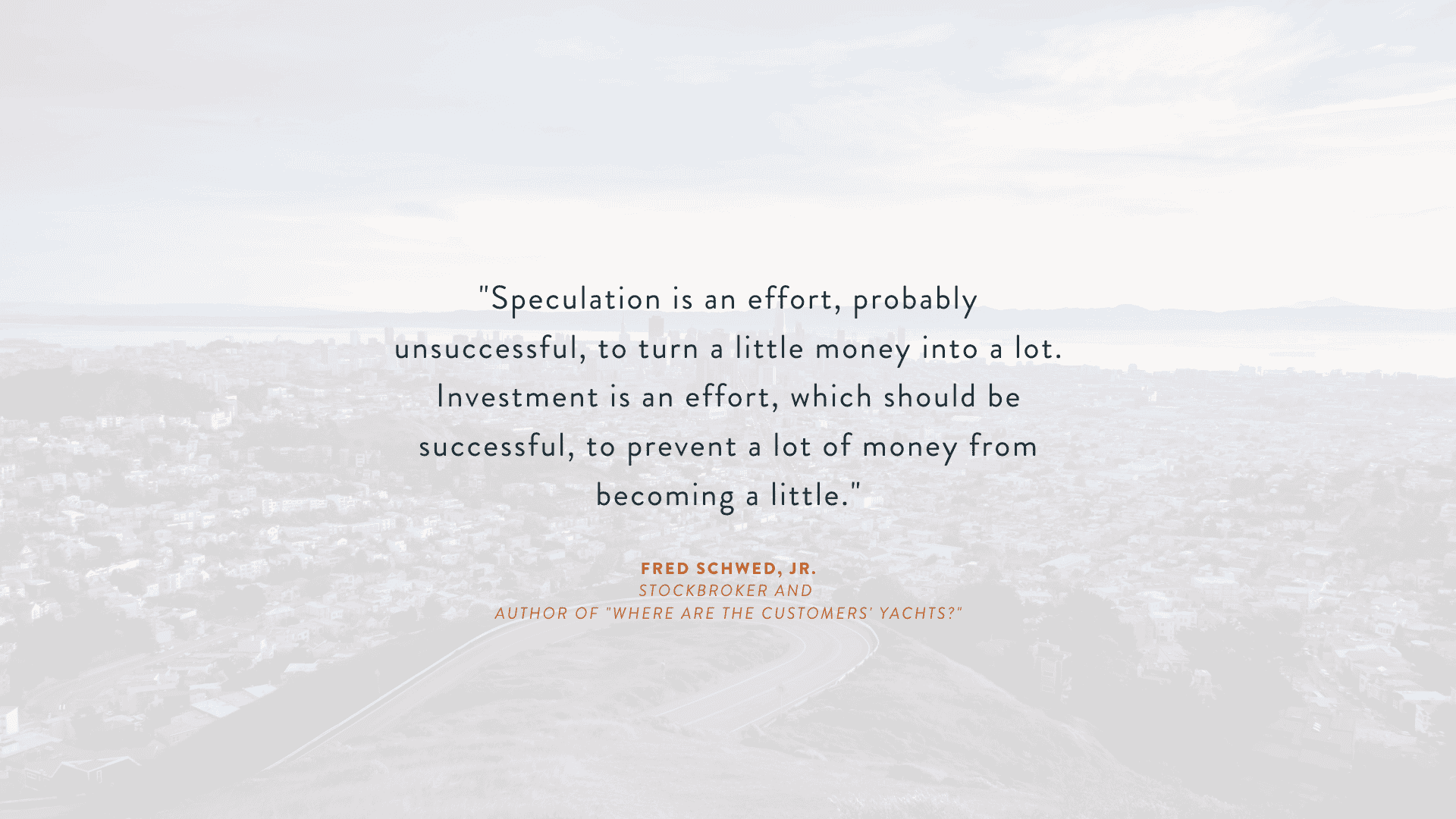Schedule a talk with one of our advisors to learn more about Summitry and how we can help you get a foothold on your financial life. For career opportunities please visit careers at Summitry.
Team
Insights
Pages
- Let's Talk
- Phone / Directions
Concentration & Bias
Jun 8, 2021

A fundamental principle in behavioral economics is that people compare the prospect of loss to the prospect of gain when making choices, and that suffering losses is roughly twice as impactful[1] psychologically than enjoying gains. This is what drives people to behaviors that mitigate risk. It is what drives investors to diversify their portfolios.
But we see some countervailing forces at play with people who have benefitted from restricted stock grants. The Bay Area is different than many places in the world because employee stock grants drive much of the region’s wealth creation. Through accumulation of employer stock, people often build highly-concentrated portfolios with heightened risk exposures, but do little to mitigate this substantial financial risk.
Fortunes (large and small) can be built on concentrated stock positions
We know this to be true, because we see this firsthand among our clientele. We also see these people behave in ways that run counter to conventional wisdom regarding diversification as the first line of defense in addressing investment risk. What is holding them back?
Psychologists point to a number of biases that arise from people’s experience. Among them, people’s expectations for the future are often anchored to their experience in the past. Strong results are expected to beget strong results. In addition, since the concentrated stock position involves a company in which the holder is familiar and comfortable, psychologists conclude that holders tend to be overconfident in the prospects for that firm’s stock. They underestimate the odds of adverse outcomes.
Inaction is also an action
Further, holders of a winning position may also fail to take action because they wish to avoid the sense of regret for having done something that may prove in the future to have been to their disadvantage. It is often less of a mental burden on them to do nothing. Capital gains taxes, of course, compound the inertia to maintain concentrated stock positions.
We know from experience and observation that it can be dangerous to allow cognitive biases to drive decision making, whether in investing or elsewhere in one’s life. Careful financial planning with the help of a Summitry Financial Advisor can break down these biases and facilitate smart decisions that serve one’s best financial interests.
Diversification strategies are not one size fits all
We acknowledge and accept that great fortunes are typically built on concentrated ownership positions, but it’s important to note that concentrations have also been the basis of fortunes lost. Whether by luck or skill, we in the Bay Area have played our hands well and our concentrated stock risks have paid off.
We also acknowledge and accept that fortunes are rarely lost with diversified portfolios. The next hand we play is for the future, not the past, and we need to exercise good, bias-free judgment to ensure ourselves a comfortable life and legacy.

When a concentrated position has led to success turning a little into a lot, despite the odds, the prudent action to take going forward has been, more often than not, to diversify to “prevent a lot of money from becoming a little.”
When wealth has been created to the point where it can pay for the life you need and want for the rest of your life, preserving it while still growing it meaningfully through diversification becomes more important than speculating on it growing as it has in the past. This is particularly true when considering the possibility that it could be halved in value, or worse, due to unknowable and uncontrollable events – and that if it did, it would not be able to pay for the life you need and want for the rest of your life.
Using the right tool(s) for the job
Ultimately, these decisions will likely (but not always) involve addressing a concentration in some way, but there are a range of strategies that can be pursued that go beyond the simple sale of the position. With our clients, we explore the following potential solutions:
- Tax sensitive strategy selling
- Exchange funds
- Qualified opportunity zone funds
- Options overlay
- Collar strategies
- Charitable remainder trusts
- Donor advised funds/private foundations
Each of these tools can be leveraged to address a specific concentration challenge and no one tool is appropriate for all situations.
It is critically important that we begin our work together by constructing a comprehensive financial plan. Through this process, we can understand which tool or tools must be brought to bear to address the concentration challenge in your specific situation. Together, we’ll find the solution that works best for you.
[1] Kahneman, D. & Tversky, A. (1992). “Advances in prospect theory: Cumulative representation of uncertainty”. Journal of Risk and Uncertainty.
GET THE NEXT SUMMITRY POST IN YOUR INBOX:
MORE INSIGHTS AND RESOURCES
Let's talk
Schedule a talk with one of our advisors to learn more about Summitry and how we can help you chart a path for your financial future.

Cynthia Duncan
Senior Financial Advisor


